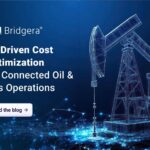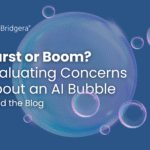I wrote about predicting the future with analytics in a blog titled “Remember the Past and Predict the Future“. In many industries technological advances have greatly reduced the margin of error for predicting future outcomes. But what good is a prediction if you don’t take action?
Thinking about the ramifications of taking action on predictions can turn into a mind warping time travel movie. Or more realistically, a never ending iterative loop:
If my data is telling me that X is going to happen, then I need to do Y.
But if I do Y, my data tells me Z will happen.
While Z is better than X, is it the best alternative?
Perhaps I desire ZZ.
How do I exit analysis paralysis and make an actionable decision before the outcome happens?
In “Remember the Past …”, I wrote that prediction becomes much more accurate the closer you get to the predicted outcome. While this is great and hopefully intuitive, are we able to take action fast enough? If the weather forecast offers a 5-minute lead time, will you ever grab your umbrella?
Reaction Time v. Prediction Lead Time
If we agree that predictions are generally more accurate the closer in time you get to the predicted outcome, then perhaps our focus should be on improving reaction time. Can executives use Big Data Analytics to improve their reaction time?
Can we take decisive action while things are happening around us?
At the San Jose Hadoop Summit in June 2016, Rob Bearden, CEO of Hortonworks, offered a mandate which may be possible today with their Hadoop distribution. “…it is no longer acceptable to just analyze historical information to report on and understand what happened. You’ve actually got to take decisive action while things are happening.” You can read a blog summary here: HOW DATA WILL TRANSFORM EVERYTHING.
The Hortonworks blog is referring to HDF powered by Apache Nifi, Kafka, and Storm. We at Bridgera are predicting a bright future with this technology deployed in our IoT platform to collect and analyze real-time data for use cases requiring rapid reaction.
We will certainly see more examples of technology enabling us or machines to take action while things are happening. The autonomous vehicle is one that comes to mind. We will also see more examples of predicting future outcomes, such as weather forecasting.
If you know the future far enough out, reaction time becomes less relevant. If you can react instantly, knowing the future becomes less relevant. Which strategy has the most potential? Perhaps the pursuit of both is the right answer.
If you are reading this in the future, please tell my future me what you think and I will react within the limits of future technology.
About the Author: Ron Pascuzzi currently leads the sales and marketing efforts at Bridgera, LLC in Raleigh, NC. Bridgera provides open source software enabled Big Data and IoT applications in combination with custom built modular apps to equip their clients with cost effective solutions to keep them competitive in a rapidly evolving digital era.






